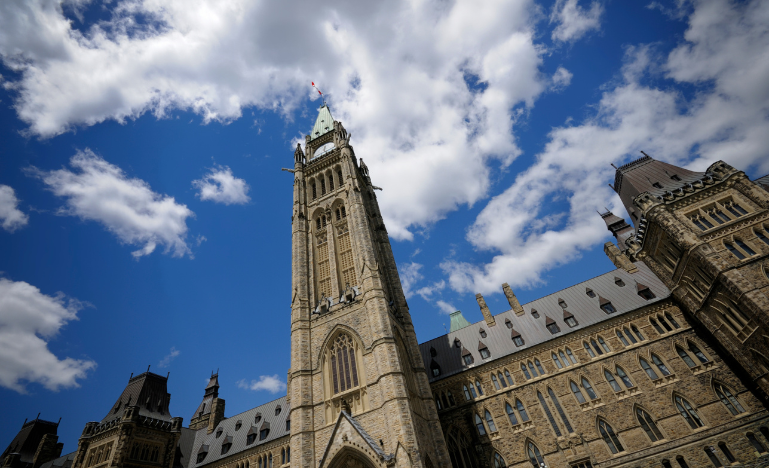‘Concerning’ cuts to justice system in federal budget
Financial roadmap includes billions in spending and plenty of trimming, including a 15 per cent cut to the Department of Justice to help make ends meet and no new judges

The federal budget includes considerable cuts to the justice system. While the Canadian Bar Association is hoping to learn more about what they mean in concrete terms, at first glance, they’re “concerning.”
The budget notably proposes to cut more than $20 million over three years from support services for administrative tribunals, which Canadians rely on as a major part of our judicial process.
One of them, the Social Security Tribunal, deals with disputes related to programs such as Old Age Security and employment insurance. With fewer resources for support services, these tribunals may be less able to handle cases efficiently.
“As we’ve been saying for a long time, a well-resourced justice system is a fundamental element of a free, secure, and prosperous society,” the CBA said in a statement.
If the government plans to “spend less” and “invest more,” the justice system should definitely be on the investment side of the ledger, it added.
This fall, the CBA sounded the alarm that Canada’s creaking justice system is being starved of much-needed funds to fulfill its constitutional mandate.
In a submission to Finance Canada, the association said the federal courts are facing a structural funding gap amid a surge in immigration cases, cybersecurity risks, and new translation requirements. This has led to growing delays and could undermine the courts’ independence and effectiveness.
“When the justice system functions well, our economy can flourish,” the CBA said.
“When justice system institutions are overburdened, delays multiply, public confidence suffers, and it becomes much harder to meet our economic potential."
The federal budget, tabled on Tuesday, includes billions in spending that could push the deficit to $78.3 billion, the largest deficit outside of a pandemic year. There’s also plenty of trimming, including a 15 per cent cut to the Department of Justice (DOJ) over three years to help make ends meet.
The financial knife also fell on the Administrative Tribunals Support Services, the Canadian Human Rights Commission, the Law Commission of Canada, and the Office of the Director of Public Prosecutions.
The budget proposes a total of $57.8 million in cuts across the DOJ and the four other agencies.
In a statement, Law Commission President Shauna Van Praagh said they’re mindful of the fiscal circumstances and challenges facing the country.
“We look forward to pursuing our important work with energy, ambition, and resourcefulness, achieving high value for low cost and making necessary adjustments to the scope and scale of our programs in light of our revised budget.”
To meet the reduction targets, the DOJ plans to introduce process efficiencies and standardization, which includes amalgamating business units and leveraging AI. The investments in AI are intended to include “advanced analytics and automation tools to streamline routine tasks, enhance decision-making and free employees to focus on higher-value strategic work.”
The department will also review the limits to the access to information procedure in the income tax and GST appeals at the Tax Court of Canada.
“Increasing these limits, which have not been updated since 2013, will promote cost-effective dispute resolution, and lower litigation costs for Canadians and Canadian businesses and the federal government,” the budget notes.
Any such changes would require legislative amendments.
The Canadian Human Rights Commission is planning an organizational change to streamline its structure, which will consolidate the roles of chief and deputy chief commissioner. This will also require legislative amendments.
While no new judicial positions were announced, plans are in place to amend the Judges Act, which will result in the transfer of 10 judicial positions in Ontario. Eight will be transferred from the Ontario Superior Court to the Unified Family Courts (UFC), and two will move to the Ontario Court of Appeal.
“This measure is intended to directly benefit people and families who are involved with the family justice system, particularly women, since UFCs help improve access to justice in family matters, including conflict involving gender-based violence,” the budget states.
“Low- or middle-income families who are unrepresented and family members who face language and cultural barriers would also benefit from UFCs, as they help increase accessibility to justice resources for these groups.”
During the opening of the courts in September, Ontario Superior Court Chief Justice Geoffrey Morawetz appealed to Ottawa to appoint more judges, as he said there are not enough to meet the system’s demands, given high caseloads and an increased number of self-represented litigants.
In a rare joint appeal, Court of Appeal for Ontario Chief Justice Michael Tulloch said Ontario’s judges are under-resourced compared to other provinces.
Ahead of tabling the budget, the government signalled it would not include increased judges’ salaries, despite calls by the Judicial Compensation and Benefits Commission for a seven per cent bump to ensure the bench can continue to attract high-quality candidates from high-powered law firms.
The government cited a deterioration in the country’s fiscal outlook and the fact that judges already have robust pensions.
“This decision reflects today’s economic reality and current overall financial conditions,” Lola Dandybaeva, spokeswoman for Justice Minister Sean Fraser, told reporters.
Trevor Farrow, dean of Osgoode Hall Law School at York University, hopes the issue of judicial compensation doesn’t become politicized, as that could impact the independence of the bench.
He says justice systems tend to be underserved by governments of all stripes, provincially and federally, despite the importance they play in society.
“It’s a long-standing systemic problem that we as Canadians under-value and therefore under-fund comparatively our justice system,” Farrow says.
“The justice system creates a massive value proposition for society that we have taken for granted for too long, and I worry that in the give-and-take of all governments, we may be continuing to underfund our justice services.”
Ultimately, under-funding tends to cost the system overall. And while AI can have some significant benefits on routine tasks, such as addressing information flow issues, he hopes that it won’t lead to the elimination of a number of people across the system.
“We know that court administration and other services are already stretched,” Farrow says.
“AI is not necessarily going to fill those shoes—certainly not immediately.”


